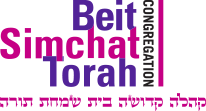
Forgetful Leadership
וְאֶת־הָאֶ֜לֶף וּשְׁבַ֤ע הַמֵּאוֹת֙ וַחֲמִשָּׁ֣ה וְשִׁבְעִ֔ים עָשָׂ֥ה וָוִ֖ים לָעַמּוּדִ֑ים וְצִפָּ֥ה רָאשֵׁיהֶ֖ם וְחִשַּׁ֥ק אֹתָֽם׃
And from the one thousand seven hundred seventy-five he made hooks for the pillars, covered their tops and banded them.
Exodus 38:28
An unintended consequence of an insular spiritual practice is becoming unaware of the needs, and even the existence, of those on the “outside.” Perhaps this is why the Talmud teaches us that one should only pray in a building that has windows, [1] to remind us that there is still an “outside,” particularly when we focus our thoughts towards heaven.[2]
While Moses might have felt at home with the angels during the forty days above Mount Sinai, the angels are not in need of spiritual leadership from him. Moses’ closest disciples might also not be the ones who most require his direction. Ironically, the people seeking guidance are sometimes not those who could benefit the most from it. Leadership includes reaching those furthest from the inner circle.
The 18 times that this week’s Torah portion mentions God commanding Moses to construct the Tabernacle correspond to the 18 blessings, known collectively as the amidah.[3] Despite, and likely because of, Moses’s focus on the inside of the Tabernacle – his awareness of the periphery is impacted. After the audit of all of the donations is made, 1775 pieces of silver remain unaccounted for.
As Moses struggled to remember what happened to the silver, a heavenly voice reminded him that it was used for the hooks on the pillars – l’amudim (sharing the same root as amidah) that hung on the outside and were hidden from his view.[4] In response to this oversight, we bring extra attention to these hooks through the special cantillation notes when we read the words of the silver in the Torah service.[5]
These hooks, vuvim in Hebrew, get their name from the letter “vuv,” the sixth letter in the Hebrew alphabet whose grammatical function is as the conjunction “and,” which is known as the “vuv hachubor – the vuv that connects.”[6] Just as the hooks attached the curtains to the pillars, the Israelites who donated the money for them still have a connection to the construction of the Tabernacle. These hooks should have been a constant reminder to Moses of the people’s role as part of the communal project.
The letter “vuv,” looks like a hook when written in Assyrian script, as opposed to the block lettering. According to the Jerusalem Talmud,[7] the whole reason why the Assyrian script was chosen, from all other alphabetical options, for writing the Torah is entirely because of the vuv’s presentation in relationship to the pillars: “שְׁיְּהוּ וָוִים שֶׁלְתּוֹרָה דוֹמִים לָעֲמוּדִים.”
While Moses represents the roots of the tree of Torah, and is placed at the center of the Torah being brought into this world, the Torah extends and branches outwards through each and every Jew.[8] This is alluded to in the story of the 1775 pieces of silver that were forgotten as a consequence of a limited focus. The verse opens with the awkward presence of the word “וְאֶת” which isn’t necessary or even translatable. That motivates a homiletic rendering of the verse to mean “and the entire Hebrew alphabet, from the aleph to the tav” was contributing. This is significant because the numerical value of all of the letters of the Hebrew alphabet combined is 1775[9] reflecting the belief that just as there are no extra letters, there are no extra people.
In the mystical tradition,[10] it is Rebbe Akiva, the inclusive leader and, relatedly, expansive interpreter, who reminds Moses of the location of the hidden silver. Rebbe Akiva, who lives many generations later, is seen as the foundational teacher of the Oral Law, just as Moses was the foundational teacher of the Written Law. Rebbe Akiva is described in Talmud Menachot as deriving meaning from the scribal crowns atop of the letters of the Torah, in ways that even Moses didn’t understand.[11] Rebbe Akiva’s expansiveness of connection to the letters is also extended to his connectivity to the Jewish People.[12]
God delivered this message to Moses through the letter “aleph,” referred to in the verse as “הָאֶ֜לֶף” literally meaning “one thousand,” and also “הָ-אֶ֜לֶף – the aleph.” The oneness of the first letter, the aleph, is deeply associated with Rebbe Akiva, whose soul departed with the word “אחד” – the oneness. This is a lesson that Moses takes with him in the completion of the Book of Exodus and reappears at the start of Book of Leviticus.
A small aleph, known as the א זעירא – aleph zeira, is found in the first word of the Book of Leviticus. “Aleph z’eira” has the same numerical value as “Rebbe Akiva” and is hinted to by King David in Psalms[13] “מַה־יָּקְר֣וּ רֵעֶ֣יךָ – how glorious are your friends.” Rebbe Akiva, through his exegetical gifts, was able to reach the essence of people who are often found beyond the limited domain of the letters themselves.[14]
Rebbe Akiva was known to offers drashas on the letter “vuv”[15] and on the word “et,”[16] forming the first word in the verse. By focusing on the letter and word that are often overlooked, Rebbe Akiva developed the sensitivity to see the totality of humanity, particularly those on the fringes, and emphasized the contributions that they make to the world and the Torah. When we focus only on the people closest to us, we can wind up overlooking those on the periphery. Just as Moses is overjoyed to remember that the silver was used for the connective vuvim, we can only experience total joy when we are unified with communities where no one is forgotten.
[1] Berakhot 34b.
[2] See Zohar in Beit Yosef Orach Chaim 90:6.
[3] Baal HaTurim Exodus 40:32.
[4] See Yalkut Shimoni on Torah 415:1 and Rabanui B’Chaya.
[5] Rav Shimon Schwab.
[6] See Lehoros Nasson.
[7] Megillah 1:9.
[8] See Brit Olam.
[9] Including the five letters that are written differently when they appear at the end of a word.
[10] See the Megali Amukos 73 for an expanded explanation.
[11] Menachos 29.
[12] His most famous teaching is on the need to “love another like one loves oneself.”
[13] Psalms 139:17
[14] See Emunas Eticha page 310 for an expanded explanation.
[15] Talmud Sotah 28a.
[16] Talmud Pesachim 22b.
